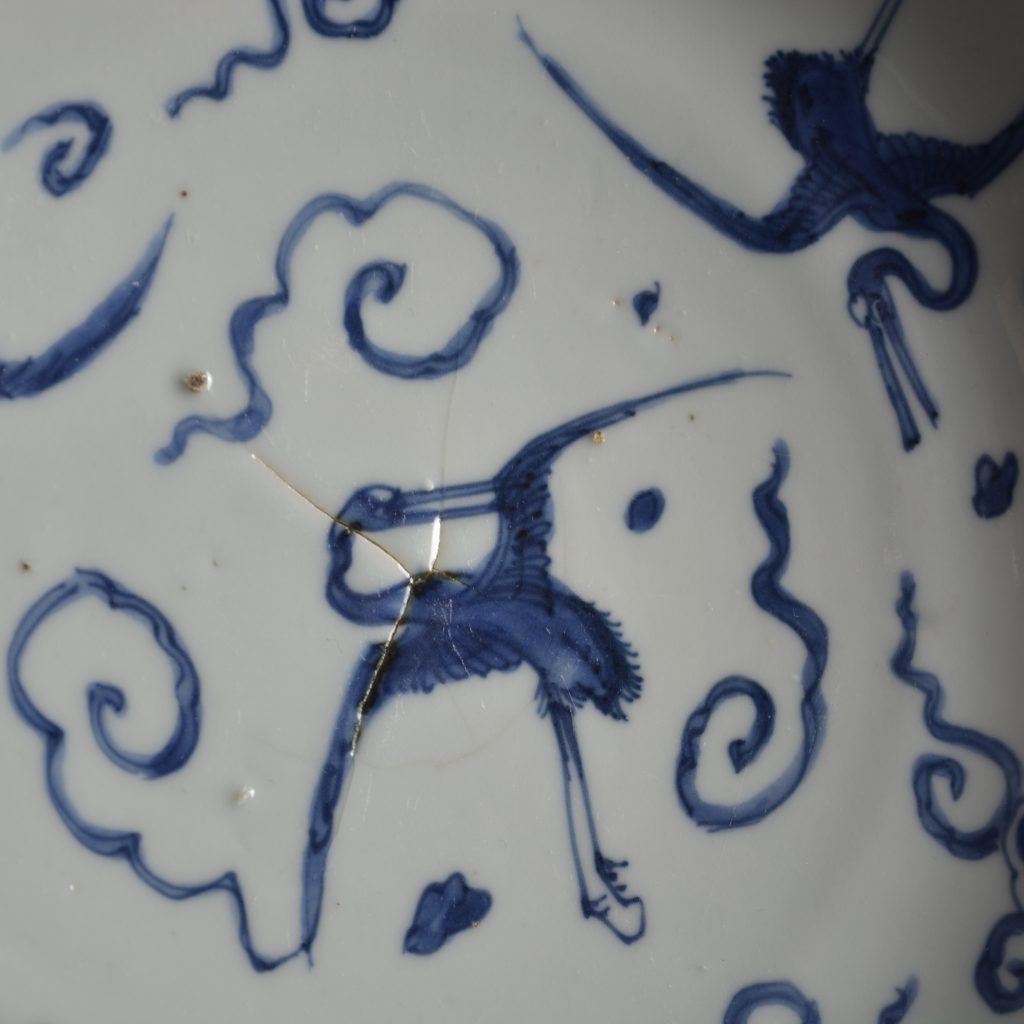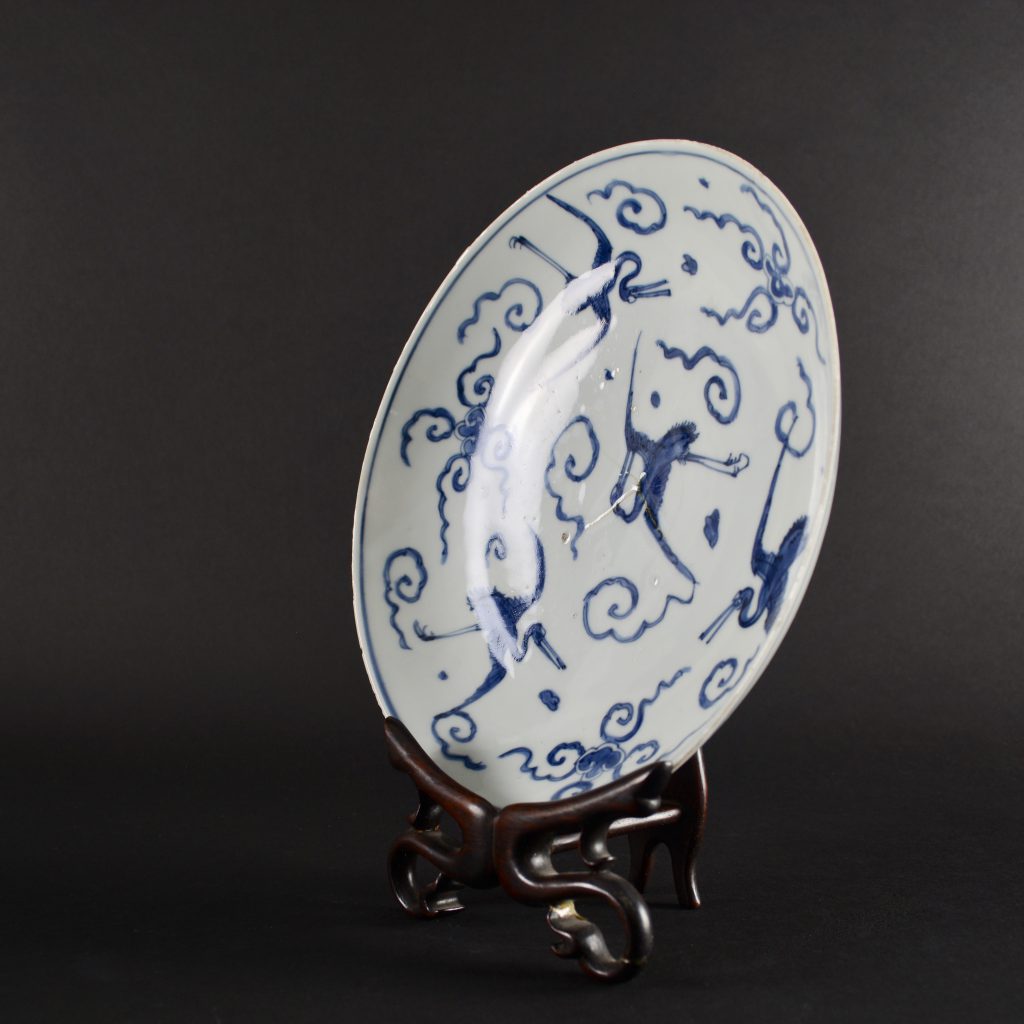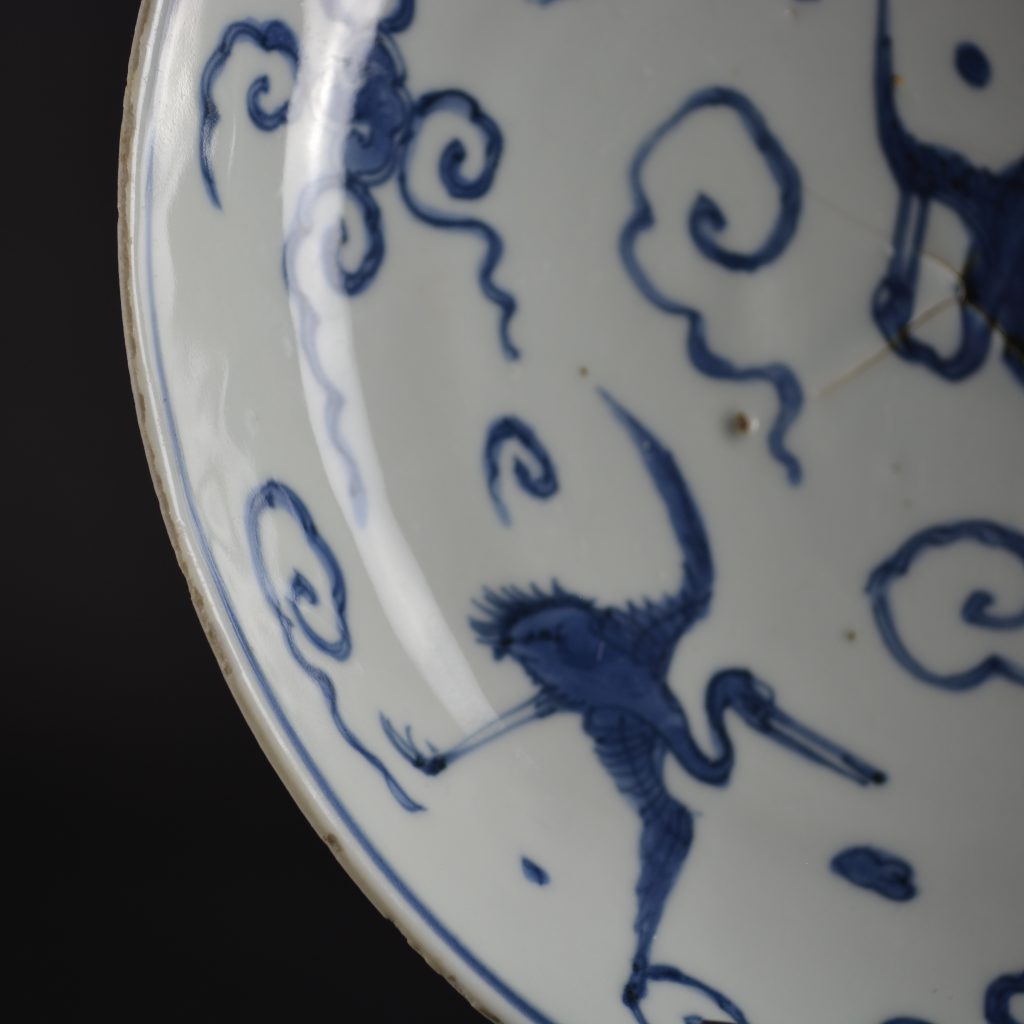
A Ming Blue and white Porcelain Dish, Transitional Period
A Late Ming Porcelain Dish, Tianqi period 1621 – 1627. This rather large Ko-Sometsuke, meaning `Old Blue and White’, dish from the end of the Ming dynasty was made for the Japanese market and would have been used for serving food during the Tea ceremony. It is saucer-shaped and painted in under-glaze cobalt blue with three cranes in flight. Some of the clouds gather around three ruyi-head emblems (sacred fungus). The design represents longevity. The firing fault to the center is typical of Ming porcelain made for Japan, it is meant to be imperfect as that reflects a humble state of mind.
SOLD
- Condition
- In very good condition, fritting - Mushikui (insect-nibbled) rim and a large open firing fault to the center.
- Size
- Diameter 21.2 cm (8 1/4 inches)
- Provenance
- N/A
- Stock number
- 25814
Information
Ko-Sometsuke Porcelain
Ko-Sometsuke, meaning `Old Blue and White` is a term used to describe Chinese blue and white porcelain made for Japan. This late Ming porcelain was made from the Wanli period (1573-1620) and ended in the Chongzhen period (1628-1644), the main period of production being the 1620`2 and 1630`s. The porcelain objects produced were made especially for the Japanese market, both the shapes and the designs were tailored to Japanese taste, the production process too allowed for Japanese aesthetics to be included in the finished object. Its seams firing faults were added, repaired tears in the leather-hard body were too frequent to not, in some cases, be deliberate. These imperfections as well as the fritting Mushikui (insect-nibbled) rims and kiln grit on the footrims all added to the Japanese aesthetic. The shapes created were often expressly made for the Japanese tea ceremony meal, the Kaiseki, small dishes for serving food at the tea ceremony are the most commonly encountered form. Designs, presumably taken from Japanese drawings sent to China, are very varied, often using large amount of the white porcelain contrasting well with the asymmetry of the design.










